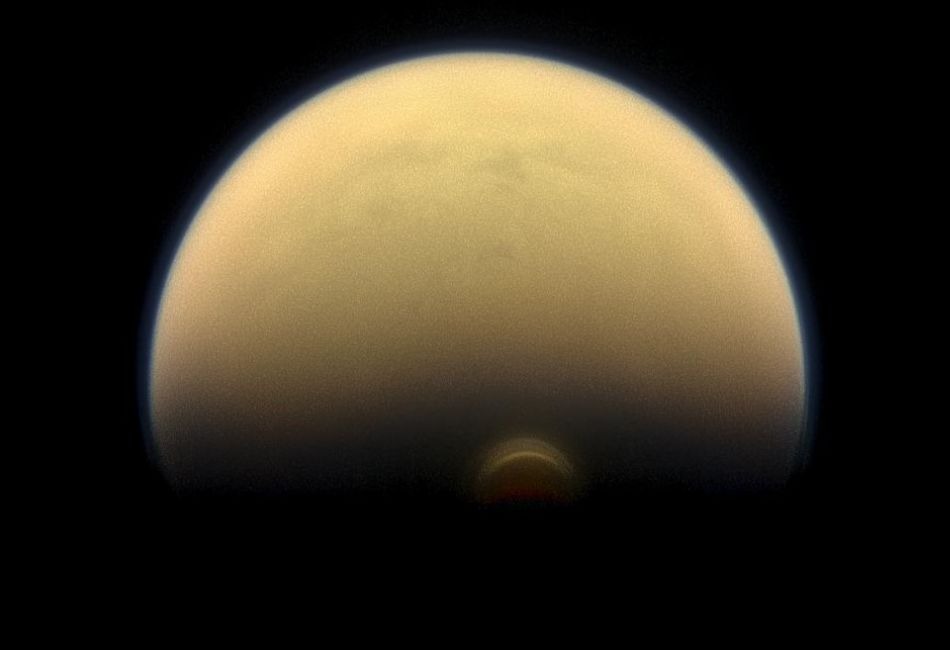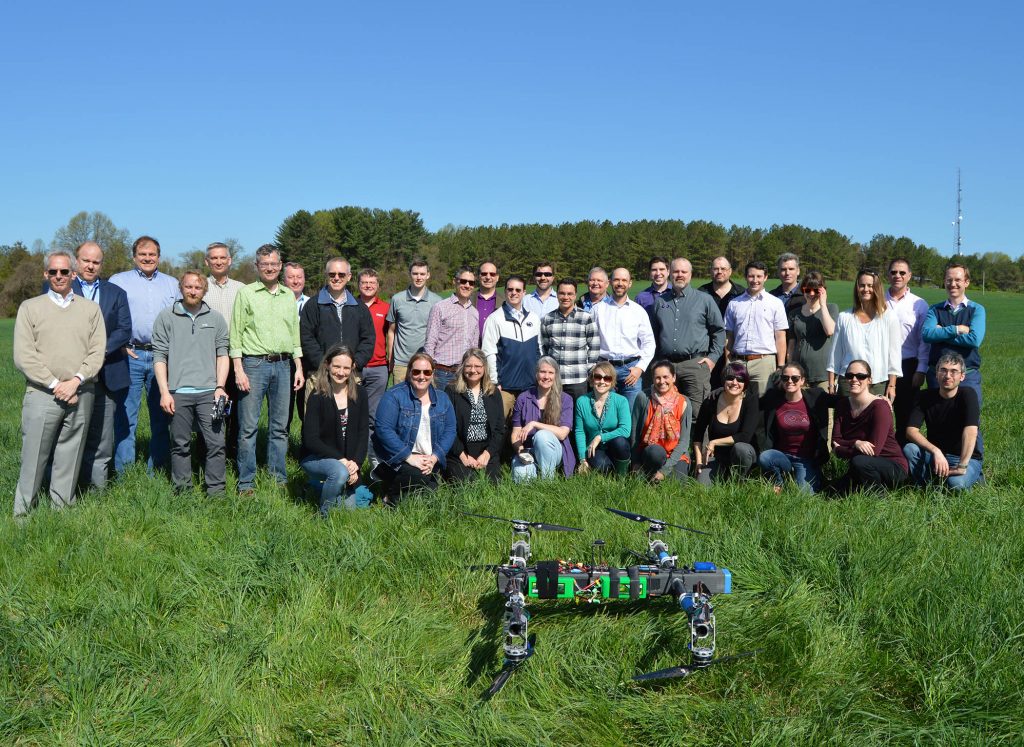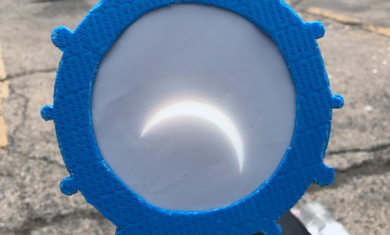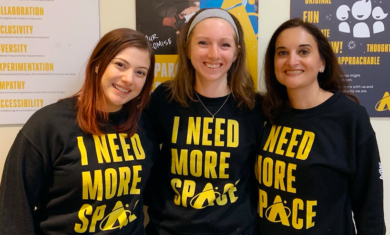Accidentally in love… with Titan

Header Image: Slipping into shadow, the south polar vortex at Saturn’s moon Titan still stands out against the orange and blue haze layers that are characteristic of Titan’s atmosphere. Photo Credit: NASA/JPL-Caltech/Space Science Institute
On the morning of June 27, 2019, NASA announced that a mission called Dragonfly—which will send a drone to explore Saturn’s largest moon, Titan—would be its next New Frontiers mission.
Sarah Hörst, one of Dragonfly’s co-investigators, is an assistant professor of planetary sciences at Johns Hopkins University. She’s been a guest speaker at no less than three Adler events, and she has many fans on staff here (you should have seen our internal communications board blow up after the NASA announcement!). I had the opportunity to talk to Sarah a few weeks later. She told me that she didn’t set out to become a Titan expert, but now that she is one, she’s excited to tell the world what makes it so interesting.
Sarah has been (accidentally) studying Titan, Saturn’s largest moon and the second-largest natural satellite in our Solar System, since her undergraduate years at CalTech.
“I started working on Titan in undergrad—actually before Cassini got there,” Sarah explained. “They needed someone to do some observations on a telescope on campus every night…and felt like an undergrad could probably do it.”
Sarah got the job and, gradually, many of her class projects started to revolve around Titan. After graduation, at NASA’s Jet Propulsion Laboratory, she found herself working with Saturn-related data from Cassini (not Titan, but Titan-adjacent—again, totally by accident). And when she made the move to graduate school for planetary science at The University of Arizona, she landed in a program led by a co-investigator of Cassini who had a whole team studying Titan.
“At that point,” Sarah laughed. “That’s kind of when the ship sailed. ‘Whelp, this is what I’m doing now.’”
Like every great accidental love story, this one has excellent chemistry. In particular, atmospheric chemistry. Sarah studies atmospheres to get an understanding of what role they play in the origin, evolution, and detection of life. And Titan is a unique world that currently has an atmosphere unlike many in our Solar System.
In fact, Titan is the only moon with a significant atmosphere. It’s made mostly of molecular nitrogen—the only other substantial molecular nitrogen atmosphere in the Solar System aside from Earth. Sarah says it’s possible that Titan’s atmosphere today may resemble an early version of Earth’s. The molecules in Titan’s atmosphere—carbon, nitrogen, and oxygen—are the same basic elements that make up all life on Earth.
Which brings us back to Dragonfly.
Dragonfly is a first-of-its-kind rotocraft lander that will look for signs of life—and conditions that are favorable to life—on Titan’s surface.
After years of accidentally finding herself drawn to Titan, it’s now actually part of Sarah’s job to convince the world that sending a spacecraft to Titan is very important. So important, in fact, that it may give us more insight about the origins of life on our own world—and other worlds that may be able to support, or have supported, life. She has to convince people that of all the questions humankind has about our Solar System, the ones they’re looking to answer with Dragonfly are the ones that scientists should be focusing on right now.
“Most of the time when we’re doing planetary science, we’re constrained by the things that already exist—mission data, instruments on the spacecraft, etc. It’s nice to sometimes think, ‘Ok, what kinds of things could we answer if we could have new data?’”

Dragonfly isn’t set to launch until 2026 and won’t land until 2034. In the meantime, Sarah will continue to assist on the science team as questions come up, help make sure the requirements for the instruments are nailed down and things are getting calibrated correctly, and develop a plan for how data analysis pipelines will work.
Sarah admitted that 2026 “sounds like it’s really far away, but for the most part [it] will happen in the blink of an eye.”







